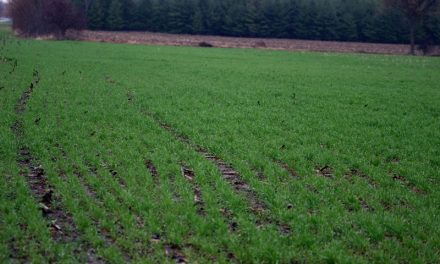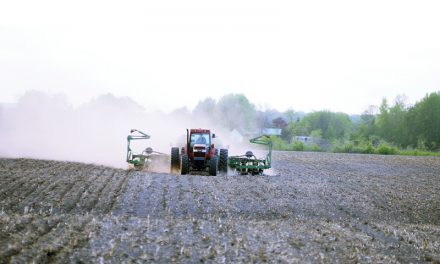Vogel Photo
By Jakob Vogel agr.
AgriNews Contributor
Although many are unwilling to admit it, summer is coming to an end. With the onset of clear brisk mornings and the anticipation of an impending harvest, corn silage crops across Ontario are approaching ideal maturation and moisture for harvest.
Over the past few years, corn silage has become a staple ingredient, and most importantly, the most significant forage used in diets on dairy farms across Eastern Ontario and Western Quebec. Although many questions come to mind when selecting varieties (leafy vs. grain vs. BMR to name a few), the harvest period for corn silage is of the utmost importance. Because, unlike most haylage crops, corrections cannot be made in the next cut later during the season, we (farmers, nutritionists, etc.) will be using this one crop as the only source of corn silage until next year’s crop. With that, the importance of aligning management strategies based on the farm infrastructure and goals is paramount.
In the next few weeks, harvesters will be hitting the field and before that happens, it is important to ensure that we have the equipment correctly set:
Length of cut:
The length of cut for corn silage can fluctuate quite significantly based on the moisture of the corn silage, but also the storage facility. However, to ensure proper packing for corn silage, recommendations vary between 15 and 20 mm. The typical rule of thumb would be, the drier the silage, the shorter it should be cut to ensure adequate conservation.
Knife status:
In order to ensure proper effective fiber in corn silage – it is important to make sure that the stalks and leaves are cut, and not shredded. Although the difference may seem subtle, the impact on milk and fat production is considerable.
As corn silage is increasing within the diet, the amount of effective fiber tends to decrease, which is why the incorporation of straw or coarse hay becomes common practice. However, with the proper cutting of corn silage and maintenance of the effective fiber, the amount of supplemental fiber within the diet can potentially be reduced, thus decreasing the cost of the diet, and optimizing the energy density of the diet.
Kernel processors:
Although not found on all harvesters, the simple technology permits producers to harvest their silage a little later in the season to allow for more starch accumulation within the grain itself. Processors should be checked routinely throughout the harvest because, although they may be properly set at the beginning, due to significant volumes of grain passing through the rollers at high speeds going through the field, the rollers should be checked routinely to ensure proper processing throughout the crop and not taken for granted.
Although some laboratories can measure kernel processing score, the analysis will take several days and would only be completed after the silage is harvested. To be proactive, handfuls of silage can be put into a clear cup filled with water. If there are any whole kernels or kernels partially split, the processors can be readjusted and if this is not a possibility, the ground speed of the equipment may need to be put into question.
With the machinery properly set and ready, the crop itself must also be ready to ensure reduced shrink and to limit the losses related to poor fermentation.
Maturity:
The uses of corn silage are not complex; the crop provides high levels of digestible energy and volume from a small acreage. Although these characteristics are what makes corn silage a great feedstuff, it also becomes a dictation on when it is good to harvest and when is too early.
Since the corn crop is a mature grass (at the base), the digestibility of the fiber is actually quite low most of the time (of course there are some exceptions), which means that the main source of digestibility nutrients within corn silage comes from starch. This starch is found within the corn kernels and needs to be properly formed to be preserved and eventually used by the rumen bugs.
By harvesting corn silage crops too early, it is possible that significant nutrients are lost through silage “juice” or is burned up through the fermentation process.
Moisture:
The final point to consider, but certainly not the least important is ‘moisture’. Depending on the storage facility that is being used at the farm, the targeted moisture may change. For example, silage headed into a bunk typically targets 30 – 33 per cent dry matter (70% – 67% moisture), while corn silage in a tower silo would be better at 38-42 per cent dry matter (62% – 58% moisture). It is important to validate these benchmarks with your nutritionist to ensure that the size of the storage facility (notably tower silos) will not change the ideal target moisture.













